Here is a crossword puzzle: Good luck!
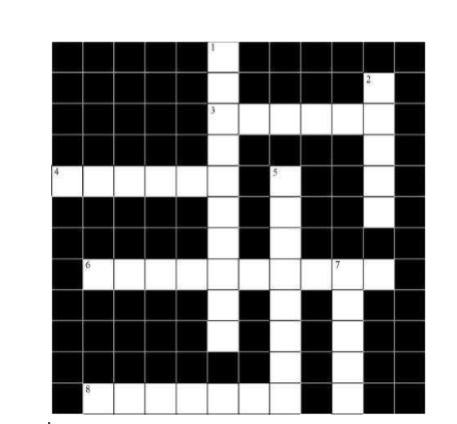
Across
3. Liquid waste products
4. Solid waste extracted in sewage treatment
6. A wor related to hyglene
8. Waste matter discharged from human body
Down
1. Used water
2. A pipe carrying sewage
5. Micro-organismwhich causes chloera
7. A chemical to disinfect water
Topper's Solved these Questions
- WASTEWATER STORYBOOK - NCERTCHAPTER - WASTEWATER STORYEXERCISE - EXERCISE
11 Videos
- TRANSPORTATION IN ANIMALS AND PLANTSBOOK - NCERTCHAPTER - TRANSPORTATION IN ANIMALS AND PLANTSEXERCISE - Exercise (Choose the correct option)
2 Videos
- WEATHER, CLIMATE AND ADAPTATIONS OF ANIMALS TO CLIMATE BOOK - NCERTCHAPTER - WEATHER, CLIMATE AND ADAPTATIONS OF ANIMALS TO CLIMATE EXERCISE - QUESTIONS
17 Videos
Similar Questions
Given below is a crossword puzzle. Read the clues across and clues down, and fill up the blank squares.
Clues down
1. Germs or germ - substances introduced into the body to prevent occurrence of an infectious disease.
2. A disease caused by an infected dog that affects the central nervous system.
3. A disease in which the eyes, the skin and the urine turn yellow.
4. The disease pertussis is popularly known as whooping .......
Clues across
1. Category of pathogen that causes diseases like common cold and mumps.
5. This is the vaccine for preventing tuberculosis.
6. An organ usually affected by tuberculosis.
7. Jumbled spelling of one of the most common insect which visits our exposed foods and contaminates them.
8. Cover this part of your body by a handkerchief while sneezing to prevent droplet infection to others.
9. These may readily grow in your hair, if you do not wash it regularly.
10. A disease that weakens body's defence system against infections.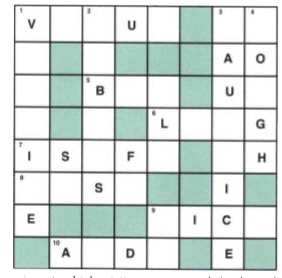
View SolutionSolve the following crossword puzzle with the clues given:
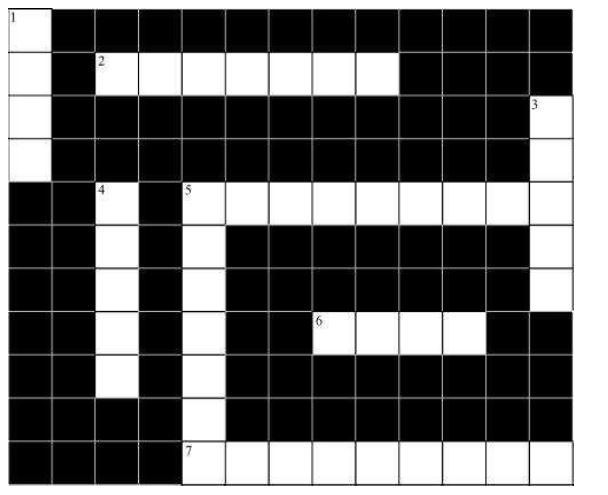
Across
2. Plantation prevents it.
5. Use should be banned to avoid soil pollution.
6. Type of soil used for making pottery.
7. Living organism in the soil.
Down
1. In desert soil erosion occurs through.
3. Clay and loam are suitable for cereals like.
4. This type of soil can hold very little water.
5. Collective name for layers of soil.
View Solution
Knowledge Check
Identify the correct matches.
A. Liquid waste product - Waste water
B. Solid waste extracted during sewage treatment - Sewage
O. Chemical used to disinfect water
Chlorine D. A gaseous fuel released during
sewage treatment - Biogas.
The options areAAandBBAandBCA and CDBandDIdentify the correct matches .
A. Liquid waste product -Waste water
B. Solid waste extracted duringsewage treatment-Sewage
C. Chemical used to disinfect -water -chlorine
D. A gaseous fuel released during sewage treatment -Biogas .
The options areAA and BBC and DCA and CDB and D
Complete the crossword puzzle using the clues given below:
Across
3. Scientific name for fat and oil. [5]
6. These are used for chewing food. [5]
7. Intestine that absorbs water into bloodstream. [5]
9. Nutrient group containing meat, eggs and beans. [7]
11. Type of acid that makes up proteins. [5]
12. Hole through which faeces pass out of the body. [4]
13. Storage organ for faeces. [6]
15. Fingerlike projections of small intestine. [5]
17. Scientific name for fibre. [9]
19. Hydrochloric__ is made in the stomach. [4]
20. Nutrient group containing sugar, starch and cellulose. [12]
21. Fluid in mouth. [6]
Down
1. Green chemical that breaks fats into smaller globules. [4]
2. The duodenum is the _ part of the small intestine. [5]
4. Organ at back of mouth where both food and air may pass. [7] 5. Muscular contractions of digestive tract. [11]
8. Chemical that breaks food into smaller particles .[6] 10.__ juice is found in the stomach. [7]
14. Bladder that stores bile. [4]
16. Fats are broken down to fatty acids and __ [8]
18. Example of simple sugar. [7]

View Solution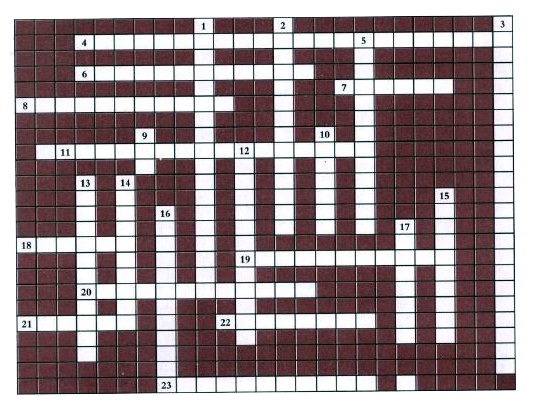
Across
4. Solution containing more amount of solute than its capacity
6. Water safe for consumption
7. Useful product generated from cowdung
8. Maximum amount of solute to be dissolved per 100 grams of water
11. Liquid which can dissolve variety of substances
18. Balls of ice falling along with rain water
19. Water having medicinal value
20. Killing bacteria by producing nascent oxygen
21. Gaseous form of water above 100∘C
22. Homogeneous mixture of two or more components
23. Water from seas and ocean
Down
1. Heat required melting ice to water at 0∘C
2. Addition of unwanted substances to water by human activity
3. Substance used for the identification of moisture
5. Settling down of suspended particles
9. A form of liquid water
10. Physical property of water having maximum value at 4∘C
12. Removal of microorganisms
13. Heat required to raise the temperature by 1∘C
14. Substance added to hasten the process of sedimentation
15. Passage of water through sand and gravel
16. Constructions help to preserve rain water
17. Gaseous form of water below boiling point
View SolutionComplete the following crossword puzzle (Figure)
Across
(1) An element with atomic number 12
(3) Metal used in making cans and member of group 14
(4) A lustrous non-metal which has 7 electrons in its outermost shell
Down
(2) Highly reactive and soft metal which imparts yellow colour when subjected to flame and is kept in kerosene
(5) The first element of second period
(6) An element whihc is used in making flurescent bulbs and is second member of group 18 in the modern periodic table
(7) A radioactive element which is the last member of halogen family
(8) Metal which is an important constituent of steel and forms rust when exposed to moist air
(9) The first metalloid in modern periodic table whose fibres are used in making bullet-proof vests
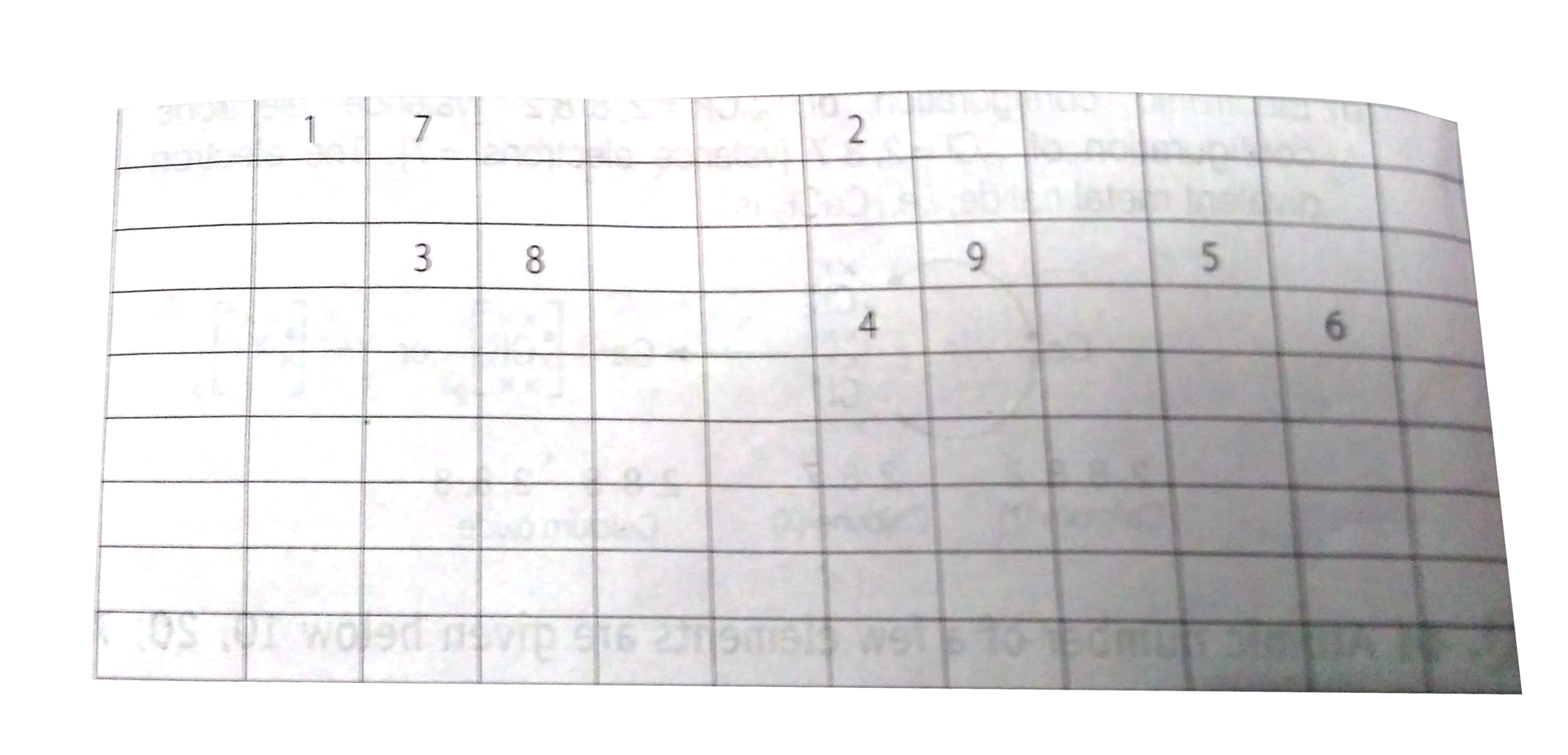
View SolutionComplete the following crossword puzzle (Figure)
Across
(1) An element with atomic number 12
(3) Metal used in making cans and member of group 14
(4) A lustrous non-metal which has 7 electrons in its outermost shell
Down
(2) Highly reactive and soft metal which imparts yellow colour when subjected to flame and is kept in kerosene
(5) The first element of second period
(6) An element whihc is used in making flurescent bulbs and is second member of group 18 in the modern periodic table
(7) A radioactive element which is the last member of halogen family
(8) Metal which is an important constituent of steel and forms rust when exposed to moist air
(9) The first metalloid in modern periodic table whose fibres are used in making bullet-proof vests

View SolutionSolve the following crossword with the help of the given clues :
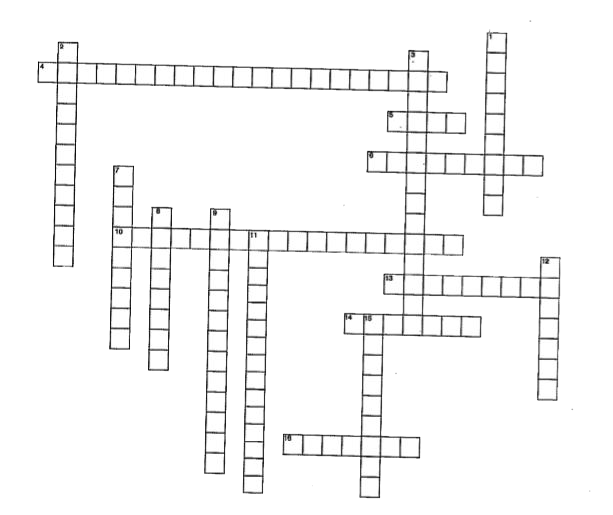
Clues :
ACROSS
4. A list of metals arranged in order of their decreasing order.
5. Liquid hydrogen used as a _____ in rockets.
6. A chemical reaction involving removal of hydrogen or addition of oxygen.
10. High temperature flame produced by burning hydrogen in oxygen. Used for cutting and welding metals.
13. An isotope of hydrogen whose nucleus has one proton and one neutron. Also called heavy hydrogen.
14. A radioactive isotope of hydrogen whose nucleus has one proton and two neutrons.
16. The most abundant isotope of hydrogen. Its nucleus consists of a single proton. It does not have any neutron and its atomic mass is 1.
DOWN
1. Discoverer of hydrogen gas.
2. Water formed of oxygen and deuterium. It is like ordinary water but has higher freezing and boiling points.
3. A substance which can remove oxygen from a compound.
7. Scientist who gave hydrogen its present name.
8. A colourless, odourless and tasteless gaseous element that is the lightest and most abundant element in the universe.
9. Solidification of liquid vegetable oils by combining them chemically with hydrogen gas.
11. Reactions in which oxidation and reduction always occur simultaneously.
12. Gas produced by the action of hydrogen with nitrogen gas in the presence of iron as a catalyst.
15. A chemical reaction involving removal of oxygen or addition of hydrogen.
View SolutionSolve the following crossword using the given clues:
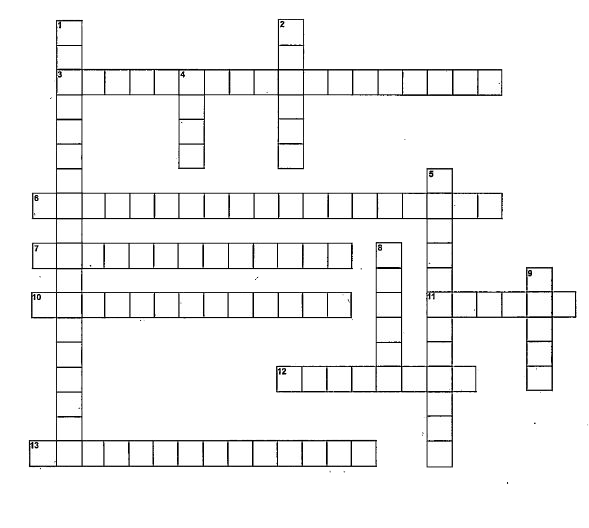
ACROSS
3. Principle relating to the apparent weight of a body when immersed in water.
6. Pressure caused by the weight of the air
7. Forces that require physical contact between objects
10. The force that exists between two magnets.
11. Unit of force
12. The resistance to movement that occurs when two bodies are in contact
13. The state when aperson does not feel any sensation of weight.
DOWN
1. The pull of the earth
2. SI unit of pressure
4. Measure of the amount of matter in a physical body
5. The upward force that a fluid exerts on an object that is immersed in the fluid.
8. The force with which the earth pulls a body towards its centre.
9. Something that tends to cause movement of a body.
View Solution

